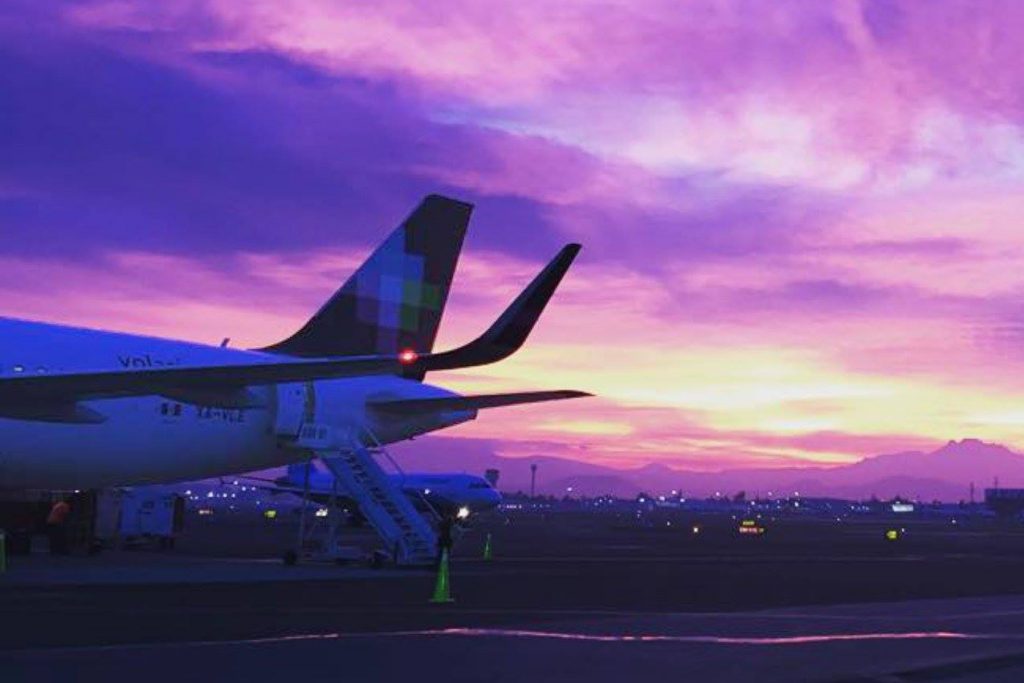Volaris Discovers Good and Bad From Mexico's Looser Travel Restrictions

Photo Credit: Volaris is one of the few airlines in the world to say it's in a better position now than before the pandemic. Volaris / Volaris
The recovery has been a bit of a roller-coaster ride for even industry outperformers like Volaris, which is seeing its March and April capacity spike after falling significantly at the end of last year and the beginning of this year.
Volaris benefits from Mexico's fairly loose pandemic restrictions. The country has had few barriers for domestic travel, and its beach resorts for the most part have remained open for international visitors. But Mexico has grappled with severe Covid-19 outbreaks and has not vaccinated as large a percentage of its population as the U.S. has.
Volaris' bread-and-butter leisure, and visiting friends and relatives (VFR) traffic has held up. In fact, the airline plans to operate 110 percent of its 2019 capacity in the second quarter. Part of this is responding to demand, and part is a function of its growing fleet, which at the end of the first quarter stood at 87 Airbus A320-family aircraft.
But the first quarter was bumpy. January and February, historically a weak period for the airline, were even weaker as Mexico and the U.S. struggled with new waves of the diseases, affecting both leisure domestic travel and southbound beach traffic, Executive Vice President Holger Blankenstein said during the company's first-quarter 2021 earnings call. January capacity was 97 percent of 2020, but capacity fell to 75 percent in February, before springing back to 93 percent in March. More than one-third of the carrier's pre-pandemic international capacity was shifted back to the domestic market in the first quarter.
In March and so far in April, however, Volaris has seen increasing demand for southbound beach traffic from the U.S. and northbound leisure traffic to Texas and Nevada, and has adjusted its capacity accordingly. Blankenstein expects demand from the U.S. will grow and says the carrier retains the ability to flex capacity up to match that demand by moving aircraft from domestic routes to U.S. routes. Bookings for Volaris' southbound routes from Mexico to Central America remain "subdued" due to travel restrictions, though, he said.
That isn't stopping Volaris from expanding into Colombia and El Salvador. The carrier is in talks with the Colombian government to launch flights to that country, although a list of destinations has yet to be finalized, Blankenstein said. The carrier also is planning to launch a subsidiary in El Salvador to fly from that country to Mexico and the U.S., similar to the subsidiary it has in Costa Rica. Both the Colombia operations and the El Salvador-based carrier could launch in the second half of the year.
The demise of Interjet, which effectively ceased operations at the end of last year, and Aeromexico's bankruptcy have removed about one-third of the aircraft from Mexico's domestic fleet, a vacuum Volaris and rival Viva Aerobus hope to fill. Volaris CEO Enrique Beltranena compared this year to the the 12 months after Mexicana de Aviacion stopped flying in 2010. It took about a year for the market to replace the lost capacity then, and he expects a similar dynamic this year. Rumors that Interjet may resume operations have not affected Volaris' plans for this year, he added.
Volaris continues to target middle-class bus passengers for growth and has maintained its outreach to convince bus travelers to fly instead. Part of that effort during the quarter included reducing fares — and therefore, yields — to fill aircraft. But Blankenstein said ancillary revenue growth made up for much of the lost yields in fares; ancillaries now account for almost 50 percent of the carrier's revenue, and Volaris aims to make it a full half by the end of the year.
Volaris reported a first-quarter operating loss of MXP 739 million ($37 million) on revenues that were 18 percent lower than last year. Ancillary revenues grew by 10 percent to $165 million. The carrier plans to add three Airbus A320neos to its fleet this year, and has arranged to lease eight additional A320neos.
